Resident Crews of the International Space Station (ISS)
![]()
ISS: Expedition 63 |
 |
 |
 |
 |
 |
 |
|
![]()
Crew, launch- and landing data
| No. | Nation | Surname | Given names | Position | Spacecraft (launch) |
Launch date |
Launch time |
Spacecraft (landing) |
Landing date |
Landing time |
Mission duration |
Orbits |
| 1 | Cassidy | Christopher John "Chris" | ISS-CDR | Soyuz MS-16 | 09.04.2020 | 08:05:06.463 UTC | Soyuz MS-16 | 22.10.2020 | 02:54:06.8 UTC | 195d 18h 49m 00s | 3136 | |
| 2 | Ivanishin | Anatoli Alekseyevich | Flight Engineer-1 | Soyuz MS-16 | 09.04.2020 | 08:05:06.463 UTC | Soyuz MS-16 | 22.10.2020 | 02:54:06.8 UTC | 195d 18h 49m 00s | 3136 | |
| 3 | Vagner | Ivan Viktorovich | Flight Engineer-2 | Soyuz MS-16 | 09.04.2020 | 08:05:06.463 UTC | Soyuz MS-16 | 22.10.2020 | 02:54:06.8 UTC | 195d 18h 49m 00s | 3136 | |
| 4 | Behnken | Robert Louis | Flight Engineer-11 | Dragon SpX-DM2 | 30.05.2020 | 19:22:45.411 UTC | Dragon SpX-DM2 | 02.08.2020 | 18:47:47 UTC | 63d 23h 25m 02s | 1024 | |
| 5 | Hurley | Douglas Gerald | Flight Engineer-12 | Dragon SpX-DM2 | 30.05.2020 | 19:22:45.411 UTC | Dragon SpX-DM2 | 02.08.2020 | 18:47:47 UTC | 63d 23h 25m 02s | 1024 | |
| 6 | Ryzhikov | Sergei Nikolaevich | Flight Engineer-4 | Soyuz MS-17 | 14.10.2020 | 05:45:04.536 UTC | Soyuz MS-17 | 17.04.2021 | 04:55:07.9 UTC | 184d 23h 10m 03s | 2960 | |
| 7 | Kud-Sverchkov | Sergei Vladimirovich | Flight Engineer-5 | Soyuz MS-17 | 14.10.2020 | 05:45:04.536 UTC | Soyuz MS-17 | 17.04.2021 | 04:55:07.9 UTC | 184d 23h 10m 03s | 2960 | |
| 8 | Rubins | Kathleen Hallisey "Kate" | Flight Engineer-6 | Soyuz MS-17 | 14.10.2020 | 05:45:04.536 UTC | Soyuz MS-17 | 17.04.2021 | 04:55:07.9 UTC | 184d 23h 10m 03s | 2960 |
unofficial Backup Crew
| No. | Nation | Surname | Given names | Position |
| 1 | Bowen | Stephen Gerard | ISS-CDR | |
| 2 | Ryzhikov | Sergei Nikolaevich | Flight Engineer | |
| 3 | Babkin | Andrei Nikolayevich | Flight Engineer | |
| 4 / 5 | Lindgren | Kjell Norwood | Flight Engineer | |
| 6 | Novitsky | Oleg Viktorovich | Flight Engineer | |
| 7 | Dubrov | Pyotr Valerievich | Flight Engineer | |
| 8 | Vande Hei | Mark Thomas | Flight Engineer |
 |
 |
 |
 |
Expedition Report
|
ISS Expedition 63 began with the undocking of Russian
spacecraft Soyuz
MS-15 on April 17, 2020 at 01:53:30
UTC. The landing crew consisted of Oleg
Skripochka, Jessica
Meir
and Andrew
Morgan. Three-and-a-half-hours later the crew landed safely
in Kazakhstan. So, the new Expedition 63 consisted of
ISS Commander Christopher
Cassidy, Anatoli
Ivanishin and Ivan
Vagner. On April 19, 2020 an ISS deboost was performed using Zvezda thrusters. This reboost was to set up for the launch of unmanned spacecraft Progress MS-14 in April 2020. The engines started at 05:09 UTC and fired 58.5 seconds. The ISS got 0.97 m/sec. more speed. The actual parameters are 417.65 km x 436.62 km. The ISS needs 92.88 minutes for each orbit. The launch of the unpiloted Russian Progress MS-14 occurred on April 25, 2020 at 01:51:41.291 UTC from the Baikonur Cosmodrome in Kazakhstan. The freighter delivers almost three tons of food, fuel and supplies to the International Space Station components for the life support system, as well as containers with food, clothing, medical supplies and personal hygiene items for the crewmembers are stowed in the cargo compartment. The Progress MS-14 spacecraft docked to the Zvezda module at the Russian segment after only two orbits at 05:11:56 UTC. Progress MS-14 will remain docked at the station for more than seven months before departing in November 2020 for its deorbit into Earth's atmosphere. Nearly three months after delivering several tons of supplies and scientific experiments to the International Space Station, Northrup Grumman's unpiloted Cygnus cargo craft departed the International Space Station on May 11, 2020. Dubbed the "SS Robert H. Lawrence", Cygnus arrived at the station February 18, 2020 with supplies and science experiments following its launch on Northrup Grumman's Antares rocket from NASA's Wallops Flight Facility on Wallops Island, Virginia. Flight controllers on the ground sent commands to robotically detach Cygnus from the Earth-facing port of the Unity module, maneuver it into place, and release it from the Canadarm2 robotic arm at 16:09 UTC. Station commander Christopher Cassidy monitored Cygnus' systems as it moved away from the orbiting laboratory. Within 24 hours of its release, Cygnus will begin its secondary mission, hosting the Spacecraft Fire Safety Experiment - IV (Saffire-IV), which provides an environment to safely study fire in microgravity. It also will deploy a series of payloads. Northrop Grumman flight controllers in Dulles, Virginia, will initiate Cygnus' deorbit to burn up in Earth's atmosphere May 25, 2020. The unmanned Japanese freighter H-II Transfer Vehicle KOUNOTORI9 or HTV-9 was launched on May 20, 2020 at 17:31:00 UTC atop a H-IIB carrier rocket flying from pad 2 of the Yoshinobu Launch Complex at Tanegashima. The Japanese cargo spacecraft was loaded with more than four tons of supplies, spare parts and experiment hardware, including six new lithium-ion batteries needed to complete an overall update of the station's electrical system. The batteries and corresponding adapter plates will replace aging nickel-hydrogen batteries for two power channels on the station's far starboard truss segment (S6) through a series of spacewalks by the station's crew members planned for later this year. This is the final set of new batteries to be launched to the station as part of an overall upgrade of its power system that began in January 2017. The spacecraft HTV-9 arrived at the station on May 25, 2020. Expedition 63 Commander Christopher Cassidy, backed up by Russian cosmonaut Ivan Vagner, operated the station's Canadarm2 robotic arm from the station's Cupola to capture the 12-ton spacecraft as it approached from below (12:13 UTC). Robotics flight controllers then took over the operation of the arm to install HTV-9 to the Earth-facing port of the Harmony module (14:46 UTC) where it will spend two months attached. On May 30, 2020 at 19:22:45.411 UTC the SpaceX Crew Dragon spacecraft launched on a Falcon 9 rocket from historic Launch Complex 39-A at NASA's Kennedy Space Center in Florida. This is SpaceX's final test flight of NASA's Commercial Crew Program and will provide data on the performance of the Falcon 9 rocket, Crew Dragon spacecraft and ground systems, as well as in-orbit, docking and landing operations. The test flight also will provide valuable data toward NASA certifying SpaceX's crew transportation system for regular flights carrying astronauts to and from the space station. SpaceX currently is readying the hardware for the first rotational mission, Crew-1, which would happen after data from this mission is reviewed for NASA's certification. The Crew Dragon docked to the space station at 14:16 UTC on May 31, 2020. With docking to the International Space Station Douglas Hurley and Robert Behnken became Flight Engineers of Expedition 63. On June 26, 2020 astronauts Christopher Cassidy and Robert Behnken performed the first spacewalk in this Expedition 62 (6h 07m). It was the first in a series of spacewalks dedicated to replacing batteries on the far end of the station's starboard truss. These spacewalks continue the overall upgrade of the station's power system that began with similar battery replacement during spacewalks in January 2017, October 2019 and January 2020. Each of the station's four main sets of arrays, two on each end of the truss, provide power to two electrical buses, or channels. To keep the lab operating during passes through Earth's shadow, each set of arrays is equipped with 12 massive nickel-hydrogen batteries, six per power channel. Altogether, 48 NiH2 batteries store power for the station's eight electrical channels. NASA is in the process of replacing all 48 with 24 smaller, more efficient lithium-ion power packs, a complex task that will take several years to complete. The existing nickel-hydrogen batteries were upgraded with newer, more powerful lithium-ion batteries transported to the station aboard the Japanese H-II Transfer Vehicle (HTV-9), which arrived on May 25, 2020. Working site for this spacewalk was S6 Channel 1B battery R&R A-F. Astronauts also were able to accomplish get-ahead tasks, including the removal of an additional nickel-hydrogen battery, originally scheduled for the second spacewalk. The spacewalkers removed five of six aging nickel-hydrogen batteries for one of two power channels for the starboard 6 (S6) truss, installed two of three new lithium-ion batteries, and installed two of three associated adapter plates that are used to complete the power circuit to the new batteries. Mission control reports that the two new batteries are working. The second EVA occurred on July 01, 2020 by astronauts Christopher Cassidy and Robert Behnken (6h 01m). The duo continued to replace nickel-hydrogen batteries with more powerful lithium-ion batteries (working site: S6 Channel 1B battery R&R A-F). It was the second spacewalk to replacing batteries on the far end of the station's starboard truss. They also routed power and ethernet cables in preparation for the installation of a new external wireless communications system with an enhanced HD camera and to increase helmet camera coverage for future spacewalks. The Flight Control Center in Moscow on July 03, 2020 at 15:53 UTC carried out an unscheduled correction of the orbit of the International Space Station to avoid a possible collision with space debris. All operations were completed in full accordance with the calculations of Russian ballistic service specialists. For this maneuver, the engines of the Progress MS-14 cargo ship were used, which is docked to the Zvezda module of the ISS Russian segment. They worked for about 100 seconds and raised the station to a speed increment of 0.5 m / sec. As a result, the orbit altitude of the ISS increased, according to preliminary data, by 900 meters. Filled with trash, the unpiloted Russian cargo ship Progress MS-13 undocked from the Pirs module of the International Space Station at 18:22:30 UTC on July 08, 2020. Later Russian flight controllers sent commands to fire the Progress' engines and deorbit the space freighter, sending it to a destructive entry over the unpopulated South Pacific Ocean. On July 11, 2020 an ISS deboost was performed using Progress MS-14 thrusters. This deboost was to set up for the launch of unmanned spacecraft Progress MS-15 on July 23, 2020. The engines started at 19:15 UTC and fired 262 seconds. The ISS got an impulse of 0.53 m/sec. After the corrective maneuver, the average orbit of the ISS decreased by 900 meters. The actual parameters are 417.7 km x 436.8 km. The ISS needs 92.87 minutes for each orbit. Robert Behnken and Christopher Cassidy left the Quest airlock on July 16, 2020 to perform the next spacewalk (6h 00m). The astronauts continued to replace nickel-hydrogen batteries with more powerful lithium-ion batteries (working site: S6 Channel 3B battery R&R A-F). They removed all six older nickel-hydrogen batteries for the truss' power system and installed three new lithium-ion batteries, as well as accompanying hardware. It was the third spacewalk to replace batteries on the far end of the station's starboard truss. The fourth EVA in this series occurred on July 21, 2020 (5h 29m). It was performed by Robert Behnken and Christopher Cassidy. Their first task was to install a protective unit to store tools for use by the Canadian Space Agency's Dextre robot. The storage unit also includes two Robotic External Leak Locator (RELL) units that Dextre can use to detect leaks of ammonia, which is used to operate the station's cooling system. The astronaut duo then worked on removing two lifting fixtures at the base of station solar arrays on the near port truss, or backbone, of the station. The "H-fixtures" were used for ground processing of the solar arrays prior to their launch. They then moved on to work to prepare the outside of the Tranquility module for the arrival later this year of the Nanoracks commercial airlock on a SpaceX cargo delivery mission. Finally, they routed ethernet cables and removed a lens filter cover from an external camera. The launch of the unpiloted Russian Progress MS-15 occurred on July 23, 2020 at 14:26:21.374 UTC from the Baikonur Cosmodrome in Kazakhstan. The freighter delivers almost three tons of food, fuel and supplies to the International Space Station components for the life support system, as well as containers with food, clothing, medical supplies and personal hygiene items for the crewmembers are stowed in the cargo compartment. The Progress MS-15 spacecraft docked to the Pirs module at the Russian segment after only two orbits at 17:44:52 UTC. Progress MS-15 will remain docked at the station for more than six months before departing in December 2020 for its deorbit into Earth's atmosphere. On July 29, 2020 an ISS reboost was performed using Progress MS-14 thrusters. This reboost was to set up for the launch of manned spacecraft Soyuz MS-17 in October 2020. The engines started at 13:57 UTC and fired 336.3 seconds. The ISS got an impulse of 0.65 m/sec. After the corrective maneuver, the average orbit of the ISS increased by 1,100 meters. The actual parameters are 417.5 km x 436.2 km. The ISS needs 92.87 minutes for each orbit. Crew Dragon Endeavour undocked on August 01, 2020 at 23:35 UTC and splashed down on August 02, 2020 at 18:42 UTC west of Florida. Eleven years after the launch of the first H-II Transfer cargo vehicle (HTV) to the International Space Station, the Japan Aerospace Exploration Agency's (JAXA's) HTV-9 departed the orbital laboratory on August 18, 2020. Christopher Cassidy used the Canadarm2 robotic arm to release the spacecraft from the station at 17:36 UTC, ending its three-month stay. To prepare for release, flight controllers operating from NASA's Mission Control Center at the agency's Johnson Space Center in Houston sent commands to unbolt and detach the uncrewed cargo craft from the station's Harmony module and remotely operated Canadarm2 to move it into place for departure. This was the final station departure of JAXA's Kounotori, or "white stork," model cargo craft, nine of which have delivered more than 40 tons of supplies to space station crews. JAXA is developing a new fleet of HTV cargo craft, the HTV-X, which is targeted for its first launch in 2022. The spacecraft, which launched from the Tanegashima Space Center in Japan on May 20, 2020, delivered about four tons of supplies and experiments to the orbital complex, including new lithium-ion batteries that were used to upgrade the station's power systems. The new-technology batteries were installed through a series of spacewalks along the far port truss "backbone" of the station. HTV-9 will be commanded by JAXA flight controllers at its HTV control center in Tsukuba, Japan, to move away from the station and, on August 20, 2020 to fire its deorbit engine in a burn that will send it back into Earth's atmosphere. Loaded with trash from the space station, the spacecraft will burn up harmlessly over the Pacific Ocean. On September 10, 2020 an ISS reboost was performed using Progress MS-14 thrusters. This reboost was to set up for the launch of manned spacecraft Soyuz MS-17 in October 2020. The engines started at 20:32 UTC and fired 225 seconds. The ISS got an impulse of 0.45 m/sec. After the corrective maneuver, the average orbit of the ISS increased by 800 meters. The actual parameters are 419.6 km x 437.9 km. The ISS needs 92.90 minutes for each orbit. According to the Automated Warning System on Hazardous Situations in Outer Space data (TsNIIMash, part of Roscosmos), a former US military satellite BRICSat-2 poses no threat to the International Space Station. Based on the data analysis, the ISS flight control groups decided no evading maneuver is necessary. BRICSat-2 is an experimental telecommunication CubeSat used to be operated by US Navy. The satellite was injected in summer 2019 into near-Earth orbit by the SpaceX Falcon Heavy carrier rocket. The Russian party has repeatedly called the attention of the partners to new hazards in space that arise in connection of low-orbit satellite groups, and suggests developing a necessary coordination protocol. On the evening of September 22, 2020, the Russian Mission Control Center received the information that the International Space Station is flying in the so-called "red zone". This means that there is a risk of a collision between the station and "space debris". After analyzing the available information, the International Space Station's flight control group decided the need for an urgent evasive maneuver. The engines of the Progress MS-14 cargo ship were turned on at 21:19 UTC on September 22, 2020 and operated for 150 seconds. This gave the station an impulse of 0.3 m / sec, avoiding a dangerous object. NASA commercial cargo provider Northrop Grumman launched its 14th resupply mission, dubbed the SS Kalpana Chawla, to the International Space Station on October 03, 2020 at 01:16:18.3 UTC. Kalpana Chawla died in the Columbia tragedy (STS-107) on February 01, 2003 when the spacecraft broke apart over Texas. Loaded with nearly 8,000 pounds (3,630 kg) of research, crew supplies, and hardware, Northrop Grumman's Cygnus cargo spacecraft launched on the company's Antares rocket from Virginia Space's Mid-Atlantic Regional Spaceport. Highlights of space station research facilitated by this Cygnus are: Assessment of Nutritional Value and Growth Parameters of Space-grown Plants (Plant Habitat-02), which will cultivate radishes in the Advanced Plant Habitat facility as a model plant that is nutritious and edible. The ability to reliably grow nutritionally-valuable food crops in space which will be critical for NASA's human exploration of the Moon and Mars. The Universal Waste Management System (UWMS) that will demonstrate the technology for a compact toilet for astronauts to use on deep-space exploration missions. The Leveraging Microgravity to Screen Onco-selective Messenger RNAs for Cancer Immunotherapy (Onco-Selectors) investigation to leverage microgravity to test a biologic drug that could be used for the treatment of leukemia. An investigation from the University of Puerto Rico to test oxidation of ammonia in microgravity as a potential means of producing water and energy for future long-term space missions. A 360-degree virtual reality camera from Montreal-based film studio Felix & Paul, which is set to be taken outside the space station to capture a spacewalk in cinematic virtual reality. The fresh food packed inside the SS Kalpana Chawla supply ship includes prosciutto, chorizo, salami, summer sausage, brie, smoked gouda, smoked provolone, and fruits and vegetables. Among clothing and other crew provisions, the Cygnus mission delivers an upgraded toilet to the space station, allowing astronauts to test its functionality before a similar commode flies on the Orion crew capsule to the moon. The new toilet, or Universal Waste Management System in NASA-speak, is roughly the size of a camper commode. It's about 65 percent smaller and 40 percent lighter than the toilet currently on the space station, according to Melissa McKinley, logistics reduction manager for the agency's advanced exploration systems division. NASA partnered with Collins Aerospace to develop the new toilet, which officials said is better suited for female crew members than the existing commode on the space station. Engineers made parts of the toilet out of titanium to withstand acid used to pre-treat urine before the fluid is recycled back into drinking water for the astronauts, said Jim Fuller, the toilet's project manager at Collins Aerospace. The Cygnus spacecraft arrived at the space station on October 05, 2020. Expedition 63 Commander Christopher Cassidy grappled Cygnus and Flight Engineer Ivan Vagner acted as a backup (09:32 UTC). After Cygnus capture, mission control in Houston sent ground commands for the station's robotic arm to rotate and install it on the bottom of the station's Unity module (12:01 UTC). Cygnus is scheduled to remain at the space station until mid-December 2020, when it will depart the station. Following departure, the Saffire-V experiment will be conducted prior to Cygnus deorbit and disposing of several tons of trash during a fiery re-entry into Earth's atmosphere approximately two weeks later. On October 07, 2020 an ISS deboost was performed using Progress MS-14 thrusters. This reboost was to set up for the launch of manned spacecraft Soyuz MS-17 on October 14, 2020. The engines started at 08:26 UTC and fired 412.9 seconds. After the corrective maneuver, the average orbit of the ISS decreased by 1,300 meters. The actual parameters are 417.96 km x 436.55 km. The ISS needs 92.88 minutes for each orbit. Following an only three-hours solo flight Soyuz MS-17 docked to ISS on October 14, 2020. Sergei Ryzhikov, Sergei Kud-Sverchkov and Kathleen Rubins became the ISS Expedition 63 (together with ISS Expedition 62 crew members Anatoli Ivanishin, Ivan Vagner and Christopher Cassidy). With the arrival Expedition 63 became a six-person-crew. Finally, the station command changed from US astronaut Christopher Cassidy to Russian cosmonaut Sergei Ryzhikov. ISS Expedition 63 concluded with the undocking of Russian spacecraft Soyuz MS-16 on October 21, 2020 at 23:32:09 UTC. The landing crew consisted of Anatoli Ivanishin, Ivan Vagner and Christopher Cassidy. Three-and-a-half-hours later the crew landed safely in Kazakhstan. So, the new Expedition 64 consisted of ISS Commander Sergei Ryzhikov, Sergei Kud-Sverchkov and Kathleen Rubins. Among the US experiments are: ACE-T-Ellipsoids: This investigation creates three-dimensional colloids, small particles suspended within a fluid medium, and uses temperature to control the density and behavior of the particles. Colloids can organize into various structures, called self-assembled colloidal structures, which could enable 3D printing of replacement parts and repair of facilities on future long-duration space voyages. This use requires controlling particle density and behavior, however, and by designing and assembling colloids in microgravity, ACE-T-Ellipsoids provides insight into how to do so. Universal Waste Management System: Everyone "goes," but space presents unique challenges for managing human waste. The Universal Waste Management System (UWMS) investigation demonstrates the long-term use of a compact toilet together with the Urine Transfer System (UTS). The UWMS allows simultaneous use of two toilets by providing automated control of flow into the Urine Processor Assembly (UPA) or storage containers. Automated offload of this backup storage saves time for crew members. The UWMS's smaller footprint and improved technology support possible expansion of space station crew and future long-term, deep-space exploration missions. Spaceflight Standard Measures: This investigation collects a set of measurements - blood and saliva samples, skin samples, mood and sleep questionnaires, cognitive tests and more - from astronauts before, during, and after long-duration missions. These measures create a consistent set of data across the duration of the International Space Station Program that helps characterize the risks of living in space and how humans adapt to those risks. Scientists can use the data to monitor the effectiveness of countermeasures and interpret astronaut health and performance outcomes, as well as to support future human research on planetary missions. Space Organogenesis: The need for human organs for transplants far exceeds the supply, creating a need for artificial organs made using regenerative medicine technology. Cell cultures on Earth are two-dimensional, but microgravity may enable growth of cell cultures in three dimensions without using artificial structures. Development of Advanced 3D Organ Culture System Utilizing the Microgravity Environment (Space Organogenesis) demonstrates growth of 3D organ buds from human stem cells in microgravity and analyzes changes in gene expression in the cells. This experiment represents an important first step toward growing artificial organs. |
EVA data
| Name | Start | End | Duration | Mission | Airlock | Suit | |
| EVA | Cassidy, Christopher | 26.06.2020, 11:32 UTC | 26.06.2020, 17:39 UTC | 6h 07m | ISS-63 | ISS - Quest | EMU No. 3006 |
| EVA | Behnken, Robert | 26.06.2020, 11:32 UTC | 26.06.2020, 17:39 UTC | 6h 07m | ISS-63 | ISS - Quest | EMU No. 3004 |
| EVA | Cassidy, Christopher | 01.07.2020, 11:13 UTC | 01.07.2020, 17:14 UTC | 6h 01m | ISS-63 | ISS - Quest | EMU No. 3006 |
| EVA | Behnken, Robert | 01.07.2020, 11:13 UTC | 01.07.2020, 17:14 UTC | 6h 01m | ISS-63 | ISS - Quest | EMU No. 3004 |
| EVA | Behnken, Robert | 16.07.2020, 11:10 UTC | 16.07.2020, 17:10 UTC | 6h 00m | ISS-63 | ISS - Quest | EMU No. 3004 |
| EVA | Cassidy, Christopher | 16.07.2020, 11:10 UTC | 16.07.2020, 17:10 UTC | 6h 00m | ISS-63 | ISS - Quest | EMU No. 3006 |
| EVA | Behnken, Robert | 21.07.2020, 11:12 UTC | 21.07.2020, 16:41 UTC | 5h 29m | ISS-63 | ISS - Quest | EMU No. 3004 |
| EVA | Cassidy, Christopher | 21.07.2020, 11:12 UTC | 21.07.2020, 16:41 UTC | 5h 29m | ISS-63 | ISS - Quest | EMU No. 3006 |
Photos
 |
 |
 |
 |
 |
 |
 |
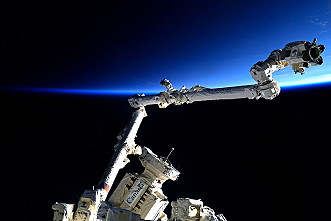 |
 |
 |
 |
 |
 |
 |
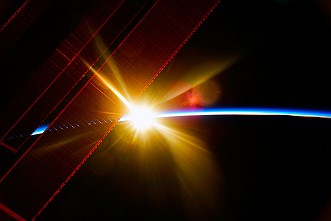 |
 |
 |
 |
 |
 |
 |
 |
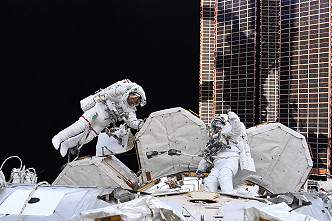 |
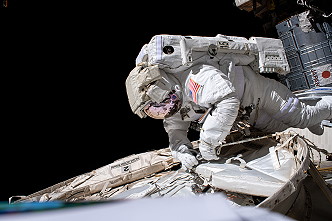 |
 |
 |
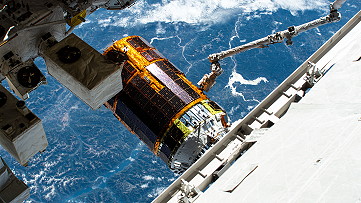 |
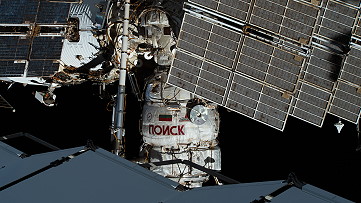 |
 |
 |
Earth observation photos |
|
more onboard photos |
|
more EVA photos |
|
| © |  |
Last update on November 11, 2023.  |
 |